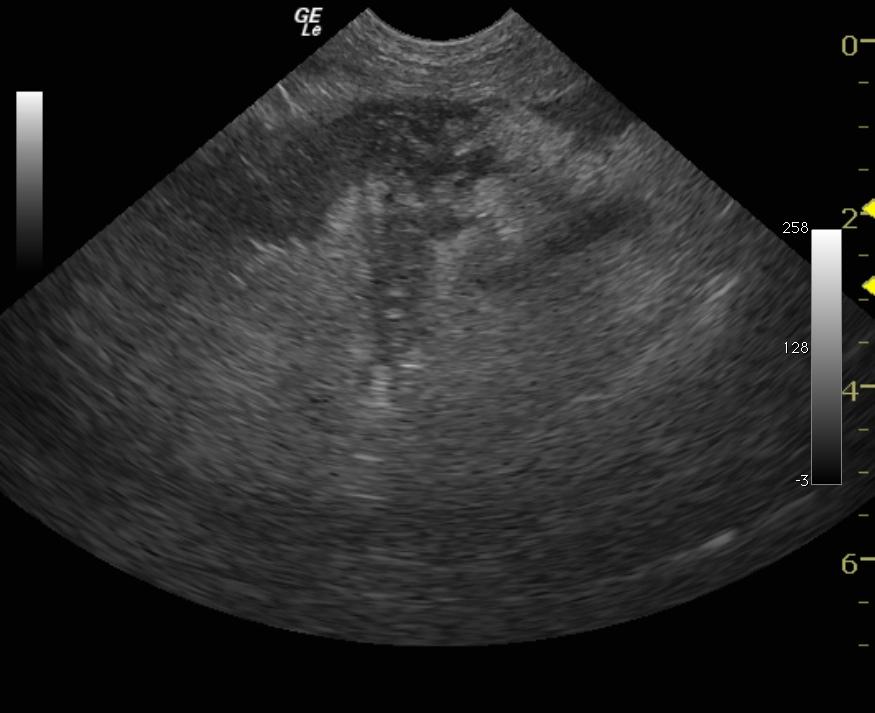A 9-year-old MN DSH presented for evaluation of polyuria with a history of elevated triglycerides. On urinalysis an inappropriately low specific gravity and glycosuria was present. Lymphopenia was evident on CBC, and hypertriglyceridemia was present on serum biochemistry. T4 was within normal limits and fructosamine was elevated. A week later, the cat became lethargic, anorexic, and hyperglycemic.
A 9-year-old MN DSH presented for evaluation of polyuria with a history of elevated triglycerides. On urinalysis an inappropriately low specific gravity and glycosuria was present. Lymphopenia was evident on CBC, and hypertriglyceridemia was present on serum biochemistry. T4 was within normal limits and fructosamine was elevated. A week later, the cat became lethargic, anorexic, and hyperglycemic.
